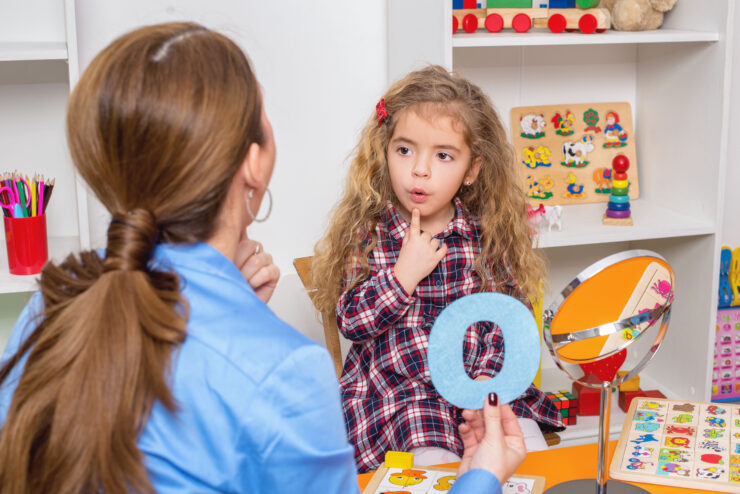Sometimes you’ll see a lisp fix itself, sometimes it needs more help.
Lisps are pretty common among kids. They’re not a big problem and can be fixed with some help. But since the COVID pandemic, some research shows a quite dramatic increase in the number of kids slow to develop language skills.
Speech Therapist Ashley Christensen shares what’s behind the increase and how can you help your own child who is struggling.
Ashley thinks the increase in slow language skills came because of the social emotional development we saw during the pandemic.
“We know that globally, the masks did show an increase in academic and social emotional difficulties,” she said.
“Although research doesn’t suggest that they caused a speech development impact, it’s only natural to think there could be a correlation.”
What is a Lisp?
Frontal Lisp: When trying to say the ‘S’ or ‘Z’ sound, sometimes the tongue slips forward past the teeth. So, instead of saying ‘sun’, kids might say ‘thun’. This type of lisp is totally normal for kids under four years old, and most of the time, it fixes itself.
“It’s so hard to even want to jump in and correct it because it can be the cutest thing ever!” Ashely exclaimed. “But, there is a point where parents can take some supportive measures.”
Lateral or Side Lisp: This type of lisp is not considered developmentally appropriate.
“This means that traditionally, it will not develop on its own without some kind of intervention, or, without showing kids the correct placement,” Ashley explained.
If your child has a lateral lisp, you will notice a turbulence, or airflow, out the side of their mouth.
When and How to Start Helping?
If your child is still struggling with their ‘S’ sound, Ashley suggested starting to help them when they’re around three to four years old.
“That doesn’t mean you’re too late if your child is eight or nine and still working on it, “Ashley added, “but it is important to show them the proper steps.”
Frontal Lisp
One way to help kids correct is by showing them how to keep their tongue behind their teeth when they’re making the ‘S’ sound. Practice this in front of a mirror so they can see what they’re doing.
“I like to say ‘Let’s come up with an animal for our tongue and we’re going to use our teeth to trap it,'” Ashley recommended.
Her favorite tip is to grab a straw and have your child bite down on it. Then, tell them to keep their tongue underneath the straw while they’re making the ‘S’ sound.
“It just gets their tongue in place without them having to think too much about it,” Ashely explained.
Lateral Lisp
The biggest thing about this type of lisp is that your child is putting their tongue on the roof of their mouth. This creates the need for air to escape out the side. You want to help them bring it down, like a dish.
“When that happens, the air escapes down the middle of the tongue,” Ashely explained.
She said practicing a few times a day is the best way to start out.
“You don’t want to discourage them, so when they don’t want to do it anymore, move on and come back to it at a later time, ” Ashley advised.
Make practicing a fun, playful thing rather than telling them they’re wrong. Figure the sounds out together and help them discover how they work.
Is it Ever too Late to Correct a Lisp?
Ashley said it does get harder to correct a lisp the longer you let it go on.
“It isn’t impossible, but earlier intervention sees a huge increase in their ability to learn it quickly,” she encouraged.
Ashley has an online Speech Sound Academy where she teaches all these tips and more. She’s also hosting a free live webinar on February 21, 2024 at 11 a.m. You can register for it on her website, mymagicwords.fun/workshop.
Find more help from Ashley on her website, mymagicwords.fun, or on Instagram, @my.magicwords.















Add comment